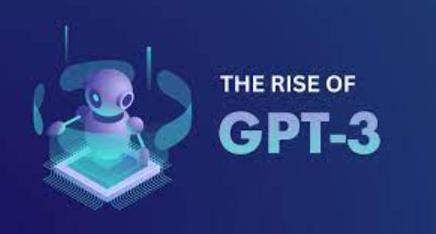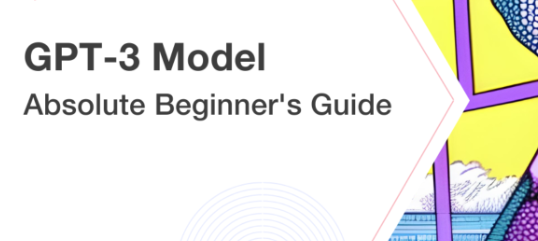In the ever-evolving landscape of artificial intelligence (AI), GPT-3 stands out as a pinnacle of innovation, promising boundless possibilities in natural language processing (NLP) and beyond. Developed by OpenAI, GPT-3, short for “Generative Pre-trained Transformer 3,” represents a significant leap forward in AI capabilities, captivating developers, researchers, and enthusiasts alike with its remarkable language generation capabilities. In this comprehensive guide, we embark on a journey to explore the fundamentals of GPT-3, unraveling its intricacies and shedding light on its transformative potential for beginners.

Understanding GPT-3
At its core, GPT-3 harnesses the power of deep learning and large-scale neural networks to comprehend and generate human-like text. Trained on an extensive corpus of diverse text sources from the internet, GPT-3 exhibits a remarkable aptitude for understanding context, semantics, and syntactic structures within natural language. Unlike its predecessors, GPT-3 boasts an unprecedented scale, comprising a staggering 175 billion parameters, enabling it to generate highly coherent and contextually relevant text across various domains and tasks.
Unveiling the Capabilities
One of the most captivating aspects of GPT-3 is its versatility. From language translation and text summarization to creative writing and code generation, GPT-3 demonstrates proficiency across a myriad of applications. Its ability to generate human-like responses to prompts, engage in coherent conversations, and even perform complex reasoning tasks underscores its potential to revolutionize numerous industries and domains.
Leveraging GPT-3 in Practice
For beginners eager to delve into the world of GPT-3, several avenues exist to explore its capabilities. OpenAI provides an API that allows developers to integrate GPT-3 into their applications and projects seamlessly. By leveraging the API, developers can harness the power of GPT-3 to enhance chatbots, automate content generation, assist in creative writing endeavors, and much more. Additionally, OpenAI offers various resources, including documentation, tutorials, and sample code, to facilitate the integration and utilization of GPT-3.
Ethical Considerations and Challenges
While GPT-3 holds immense promise, its proliferation also raises pertinent ethical considerations and challenges. Concerns regarding bias in language generation, misinformation propagation, and the potential for misuse underscore the importance of responsible AI development and deployment. As such, it is imperative for developers and researchers to adopt ethical guidelines, implement robust safeguards, and engage in ongoing dialogue to mitigate risks associated with GPT-3 and AI technologies in general.

The Future of GPT-3
As GPT-3 continues to captivate the imagination of the AI community, the future holds boundless possibilities for its evolution and integration into society. Ongoing research endeavors aim to enhance its capabilities, address existing limitations, and explore novel applications across domains such as healthcare, education, and entertainment. Moreover, advancements in AI ethics, interpretability, and transparency will play a crucial role in shaping the responsible deployment of GPT-3 and similar AI technologies in the years to come.
Conclusion
In conclusion, GPT-3 represents a remarkable milestone in the realm of artificial intelligence, offering unprecedented capabilities in natural language processing and beyond. For beginners embarking on their journey into the world of AI, exploring GPT-3 presents a captivating opportunity to witness the transformative potential of cutting-edge technology firsthand. By understanding its fundamentals, leveraging its capabilities responsibly, and navigating ethical considerations, aspiring enthusiasts can unlock the door to a world of innovation, creativity, and endless possibilities with GPT-3.
FAQs
What is GPT-3, and how does it work?
GPT-3, or Generative Pre-trained Transformer 3, is an advanced AI model developed by OpenAI. It operates by utilizing deep learning and vast amounts of data to understand and generate human-like text across various tasks and domains.
What are some practical applications of GPT-3 for beginners?
Beginners can explore GPT-3 for tasks like chatbots, content generation, creative writing assistance, and even code generation. Its versatility enables experimentation and learning across diverse domains.
How can beginners get started with GPT-3?
Beginners can begin by familiarizing themselves with OpenAI’s documentation, tutorials, and sample code. Additionally, utilizing the GPT-3 API allows for seamless integration into personal projects, providing hands-on experience with the technology.
What ethical considerations should beginners keep in mind when working with GPT-3?
It’s crucial for beginners to be mindful of potential biases in language generation, misinformation risks, and the responsible use of AI technology. Engaging in ongoing discussions about ethics and implementing safeguards are essential practices.
What does the future hold for GPT-3 and its impact on society?
The future of GPT-3 holds vast potential for further advancements, integration into various industries, and societal impact. Ongoing research, coupled with ethical considerations, will shape its responsible deployment and maximize its positive influence on society.
